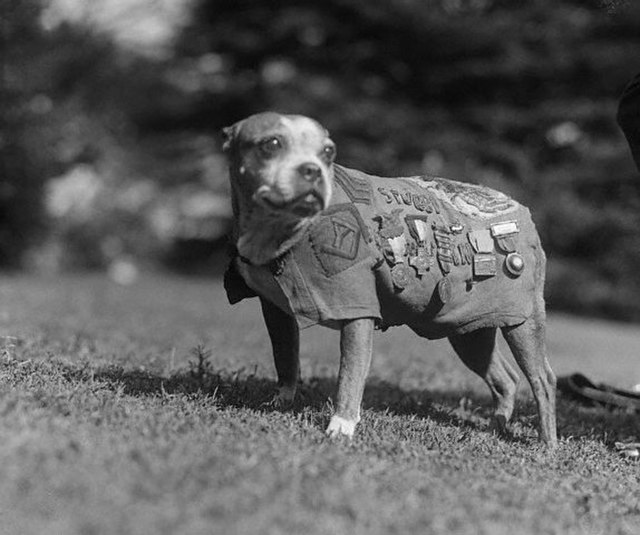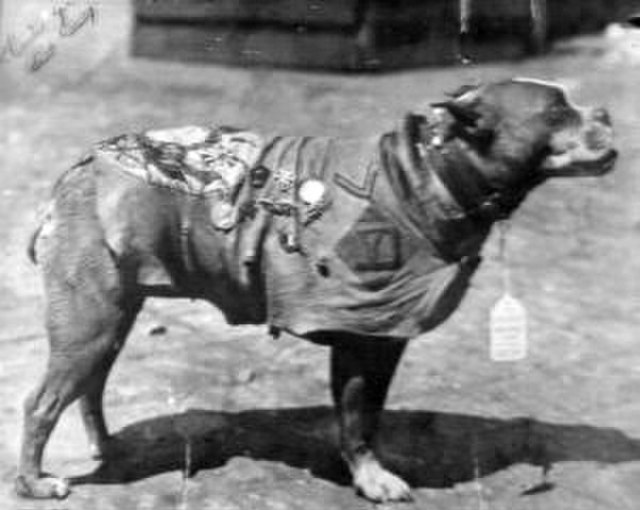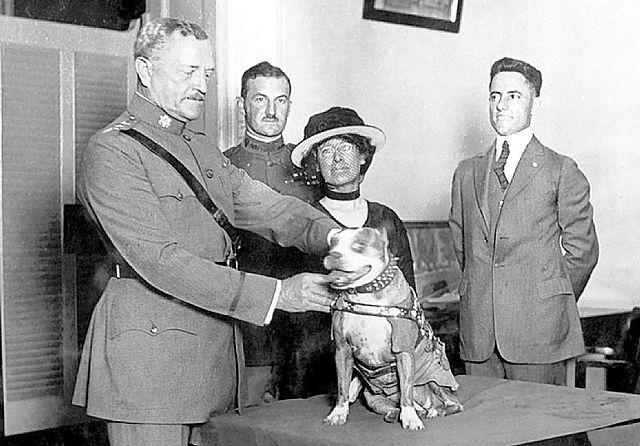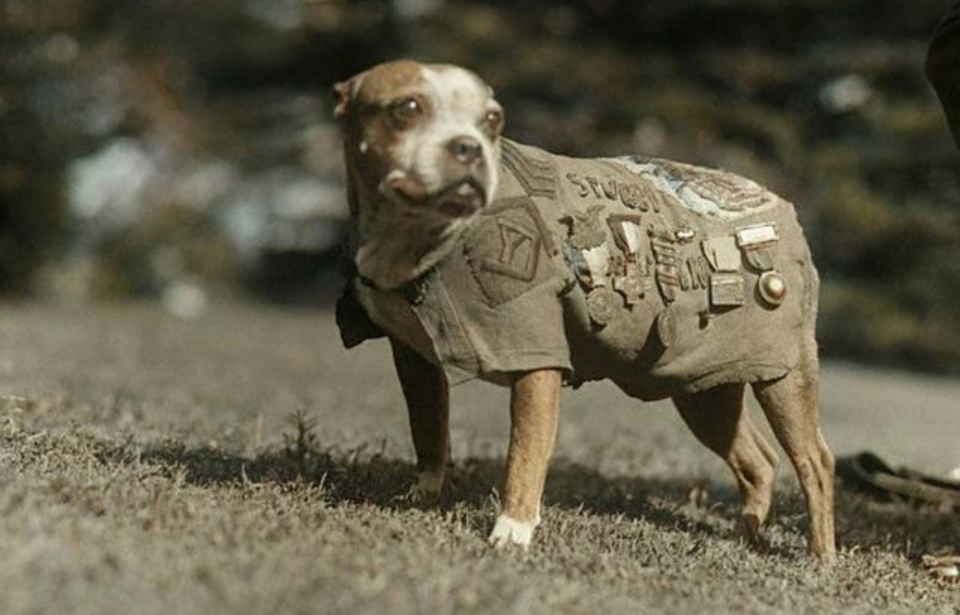Animals have been a part of military units throughout history. From ancient times to modern conflicts, they’ve been of use on the battlefield and provided morale to those serving on the frontlines. One of the more famous is Sergeant Stubby, a Terrier-mix that aided the American forces fighting in Europe during World War I.
A stray turned comrade

Sergeant Stubby was found wandering around Yale University in July 1917. At the time, the school’s football stadium was being used by the 102nd Infantry Regiment, Massachusetts 26th “Yankee” Division for encampment and training.
The Terrier-mix watched the men conduct their drills, and Cpl. James Robert Conroy took a liking to him. When it came time for the regiment to deploy overseas, Conroy hid Stubby as they traveled by rail to Newport News, Virginia, and boarded a troop ship for France.
The ship docked at Saint-Nazaire. At some point, Stubby was discovered by Conroy’s commanding officer. According to legend, he saluted the officer and was allowed to remain with the regiment. This proved vital for the 102nd’s efforts on the Western Front, as Stubby provided much-needed morale and saved lives.
Sergeant Stubby’s service in World War I

In October 1917, jsut one month after landing in France, the American Expeditionary Forces (AEF) arrived on the Western Front. Troops with the 26th “Yankee” Division were brought to Neufchâteau, in the Lorraine region, to train with the more experienced French forces, and officially entered combat on February 5, 1918, at Chemin des Dames, north of Soissons.
Sergeant Stubby and troops with the 102nd Infantry Regiment saw 18 months of service. They participated in 17 engagements, the largest of which were the offensives at Meuse-Argonne, Aisne-Marne, Saint-Mihiel and Champagne-Marne.
Stubby served his unit like any other soldier. He saved his comrades from surprise mustard gas attacks, thanks to his sensitive nose, and located injured and lost troops in No Man’s Land. He provided comfort for those wounded or dying, became adept at alerting his unit of incoming artillery attacks and is credited with capturing a German spy.
However, Stubby’s service wasn’t without its dangers. On April 20, 1918, while the 102nd was stationed at “Dead Man’s Curve,” he was injured by retreating Germans throwing hand grenades. He recovered in a little over a month, returning to the trenches. He’d also suffered injuries from mustard gas and shrapnel, earning him a Wound Stripe.
Following the retaking of Château-Thierry by the US forces, those living in the town made Stubby a chamois coat, upon which his medals were pinned. When the First World War came to an end on November 11, 1918, he remained in France for several months, as the process of demobilization was protracted.
Post-war celebrity

Once allowed to demobilize, James Conroy brought Sergeant Stubby back to the United States, where he was an instant celebrity. He marched in – and led – parades across the country, and met Woodrow Wilson, Calvin Coolidge and Warren Harding. He was even given lifetime memberships to the American Legion and the YMCA, with the latter stipulating Stubby was entitled to “three bones a day and a place to sleep” for as long as he lived.
In 1921, General of the Armies John J. Pershing held a ceremony to honor the 102nd Infantry Regiment. He also honored Stubby with a gold medal from the Humane Education Society. While not an official military commendation, it dubbed him the greatest war dog in American history.
Stubby eventually attended Georgetown University Law Center with Conroy, where he came the Georgetown Hoyas’ team mascot. During halftime, he’d nudge the football around the field, much to the amusement of those in attendance.
In March 1926, Stubby died in his sleep. He received a half-page obituary in The New York Times. His body was preserved via taxidermy and his cremains sealed within the mount. In 1956, Conroy gave his taxidermied friend to the Smithsonian Institute, where he sits as part of “The Price of Freedom” exhibition.
More from us: 24 Photos That Show the Remnants of World War I-Era Trenches Across Europe
Want War History Online‘s content sent directly to your inbox? Sign up for our newsletter here!
Stubby has posthumously been the recipient of many honors. During an Armistice Day ceremony in 2006, he was given a brick on the Walk of Honor at the Liberty Memorial in Kansas City, and a portrait of him is displayed at the West Haven Military Museum. In May 2018, Conroy’s descendants dedicated a life-size bronze statue to Stubby and fallen veterans, which sits in the Connecticut Trees of Honor Memorial at Veteran’s Memorial Park, in Middletown, Connecticut.
